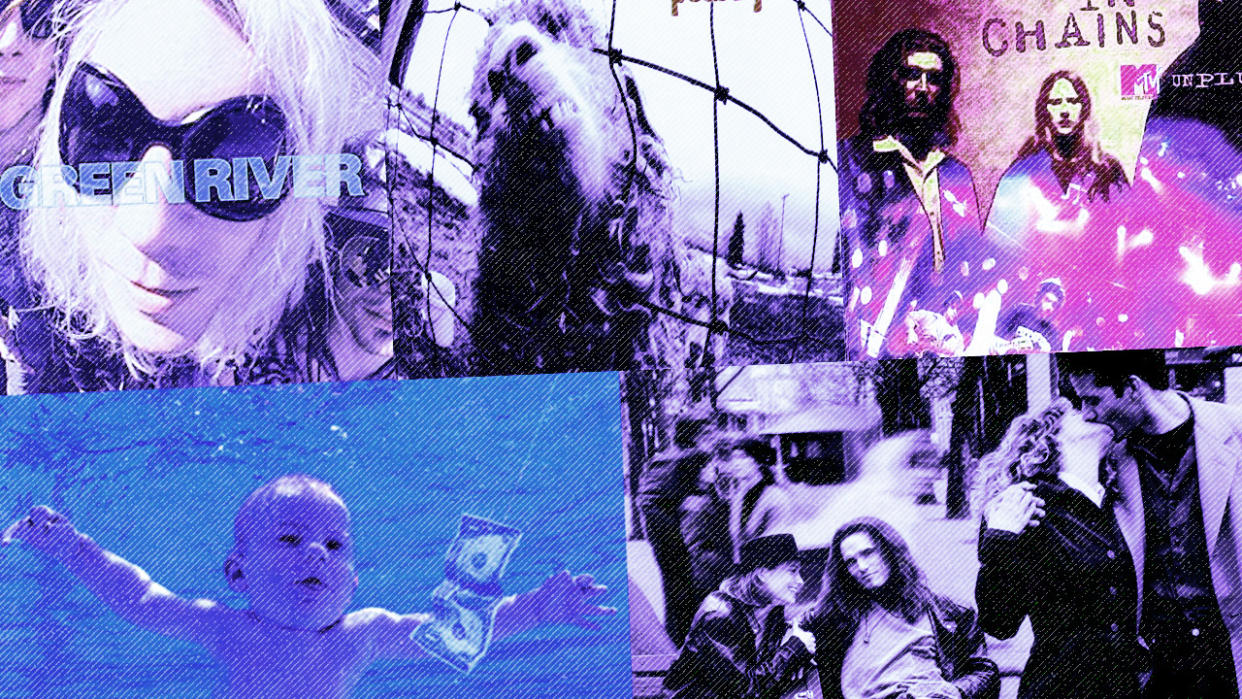A beginner's guide to grunge in five essential albums

Here’s a tale about a rabble of underground rock visionaries turning a thriving local music scene into a global phenomenon, putting the world’s spotlight onto the US’s Pacific Northwest and prompting teenage Herberts as far afield as Chelmsford, Essex to suddenly have the urge to own a corduroy shirt (yes, that was me).
Along the way there were those who turned their back on it, those who lost their way, those who died and those who turned their back on it, but turned round again with a new set of rules and ended up staying really big anyway and everything was fine (okay, this bit pretty much just refers to Pearl Jam).
What remains is the music, most of which still sounds vital today, artefacts from an era that dramatically reshaped what rock music could be.

Green River - Rehab Doll (1988)
Rehab Doll is definitely not the first grunge record – it’s not even the first Green River record, preceded by the previous year’s mini-album Dry As A Bone and 1985’s Come On Down EP – but no band best sum up the different directions in which grunge would twist and turn than this Seattle five-piece. Stone Gossard’s gnarly riffs would be honed into anthemic classic-rock in Pearl Jam, as would the guitarist’s rhythmic interplay with bassist Jeff Ament, whilst frontman Mark Arm and lead guitarist Steve Turner would use the punkier moments as the template for the spikier, Stooges-y sound that underpinned Mudhoney. As a standalone record, this still thrills though, if only for all the possibilities you can hear that lay ahead.
Nirvana - Nevermind (1991)
The record that needs the least amount of explaining, the story of grunge is right here in Nevermind’s 42 minutes and 36 seconds – where sweatbox venue attitude meets burgeoning ambition, where perfect pop melodies slide off crunching four-chord riffs. It was the sound of grunge going mainstream, to the point that you could split the genre into two distinct sections: before Nevermind, and after Nevermind. Two very different worlds.
Singles: Original Motion Picture Soundtrack (1992)
Is it cheating to have this in here? Tough, I’ve already written it, it’s on the internet, the time to try and stop me has passed. But the truth is that, as the very excellent soundtrack to a pretty decent film, the soundtrack to Cameron Crowe’s Seattle-set rock-rom-com perfectly captured almost all of grunge’s key players at a point when they were about to go interstellar, containing non-album classics from Pearl Jam, Chris Cornell and Smashing Pumpkins, whilst Alice In Chains wrote their masterful Would? specifically for inclusion. I say almost because, obviously, there’s no Nirvana here, the planned inclusion of their song Breed nixed by Kurt Cobain.
Pearl Jam - Vs. (1993)
Pearl Jam were pulling in different directions when it came to making their second record. Eddie Vedder was trying to wrap the whole thing in barbed wire and avoid the band being pulled into MTV’s bosom, whilst his bandmates were thinking ‘what’s the problem? We’re huge, everything’s great!’. Nodding to this, Vedder wanted to call the record Five Against One, and it’s that tension that makes Vs. such a startling, exhilarating listen. But if he didn’t want it to be massive, maybe Vedder should’ve written some crapper choruses. As it was, he laid down a series of era-defining angsty singalongs for the masses to savour. It was so huge that Vedder saw no choice but to take them on a diversion for 1994’s Vitalogy. It would be almost a decade until they came back into the light.
Alice In Chains - MTV Unplugged (1996)
It wasn’t easy trying to decide which record to end this on. It could’ve been something that demonstrated the bandwagon jumpers who followed in grunge’s wake, terrible bands devoid of the risk-taking and adventure of the scene’s pioneers. Yes, I’m talking about Creed. Or it could’ve been Smashing Pumpkins’ epic Mellon Collie And The Infinite Sadness, which triumphantly blew the whole thing wide open, or Hole’s 1998 album Celebrity Skin, a brilliant poppy rock record that hit at a time when everyone else had ran out of ideas. But really the story of grunge ends in tragedy and loss, and no record captures that better than this poignant, stripped-down live set, featuring one of Layne Staley’s final performances. The excitement of those early days was a long time ago. Here was when reality bit.
